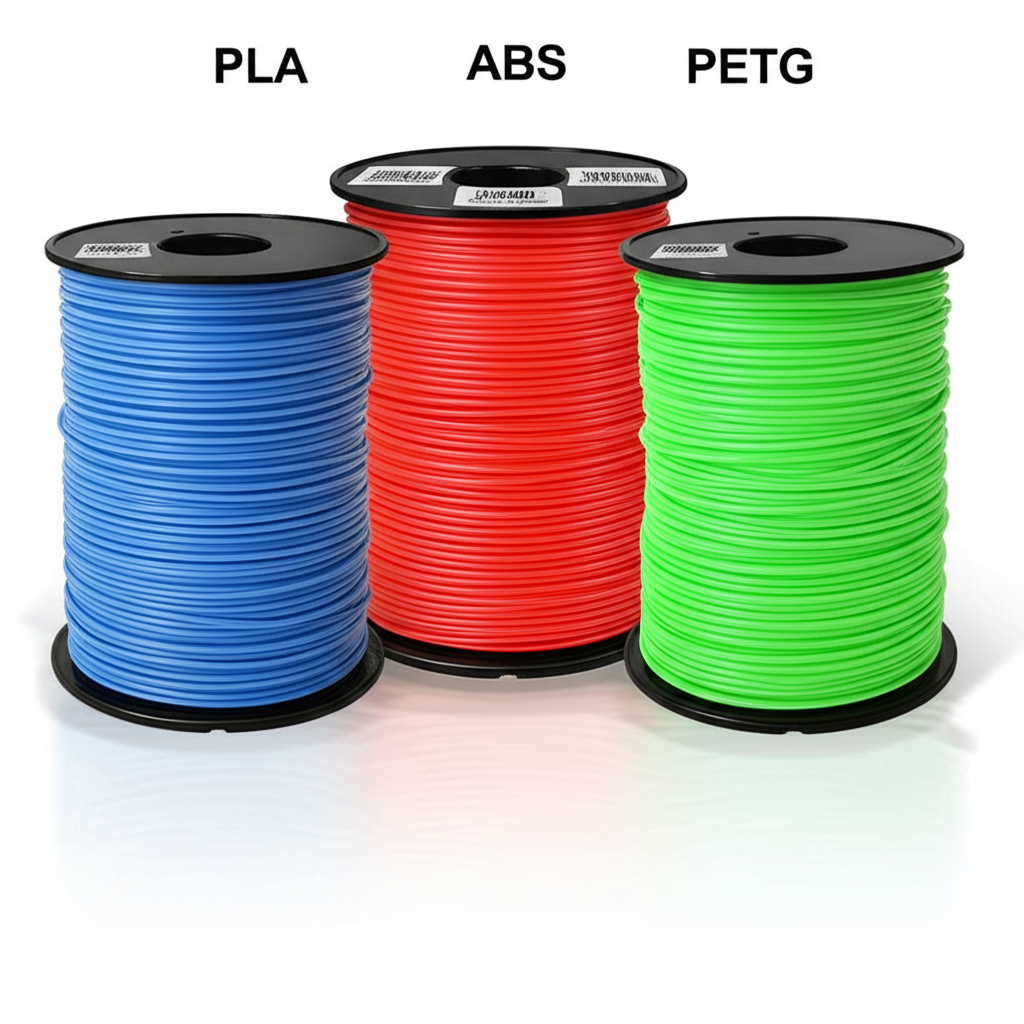Complete Guide to 3D Printing Filament Types 2024

Choosing the right filament is critically important for successful 3D printing. In this detailed guide, we'll examine the main types of filaments, their properties, applications, and printing tips for each material.
Main Filament Types
Advantages:
- ✓Easy to print
- ✓Odorless
- ✓Biodegradable
- ✓No heated bed required
Disadvantages:
- ✗Low heat resistance
- ✗Brittle
- ✗Not suitable for functional parts
Applications:
- •Prototypes
- •Decorative items
- •Toys
- •Learning
💡 Printing Tip:
Use speed 50-60mm/s, bed temperature 50-60°C
Advantages:
- ✓High strength
- ✓Heat resistant
- ✓Chemical resistant
- ✓Can be acetone smoothed
Disadvantages:
- ✗Strong odor
- ✗Requires heated bed
- ✗Prone to warping
Applications:
- •Enclosures
- •Automotive parts
- •Tools
- •Mechanical parts
💡 Printing Tip:
Always use an enclosure and ventilation
Advantages:
- ✓Easy to print
- ✓Transparent
- ✓Chemical resistant
- ✓Food safe
Disadvantages:
- ✗Can be stringy
- ✗Prone to overheating
- ✗More expensive than PLA
Applications:
- •Containers
- •Medical items
- •Protective shields
- •Functional parts
💡 Printing Tip:
Print slowly (30-50mm/s) for best quality
Advantages:
- ✓Very flexible
- ✓Wear resistant
- ✓Chemical resistant
- ✓Shock absorbing
Disadvantages:
- ✗Difficult to print
- ✗Slow printing
- ✗Requires direct drive
Applications:
- •Phone cases
- •Gaskets
- •Toys
- •Footwear
💡 Printing Tip:
Use low speed (15-30mm/s) and direct extruder
Special Filaments
Contains real wood fibers, can be sanded, stained, and processed like wood.
Ultra-strong material with carbon fibers, lightweight and rigid.
Contains metal particles, heavier than regular plastic, can be polished.
Stores light and glows in the dark, great for decorative items.
How to Choose a Filament
Step-by-step selection algorithm:
- 1Determine the purpose: decorative item, functional part, or prototype
- 2Consider operating conditions: temperature, loads, chemical exposure
- 3Assess your experience: beginners should start with PLA
- 4Check your printer capabilities: maximum temperature, heated bed
Conclusion
The right choice of filament determines the success of your project. Start with PLA to learn the basics, move to PETG for functional parts, use ABS for strong items, and experiment with specialty materials for unique projects.
Expert Recommendation
Always buy filament from reputable manufacturers. Quality material costs a bit more but saves time and frustration by providing consistent printing results.